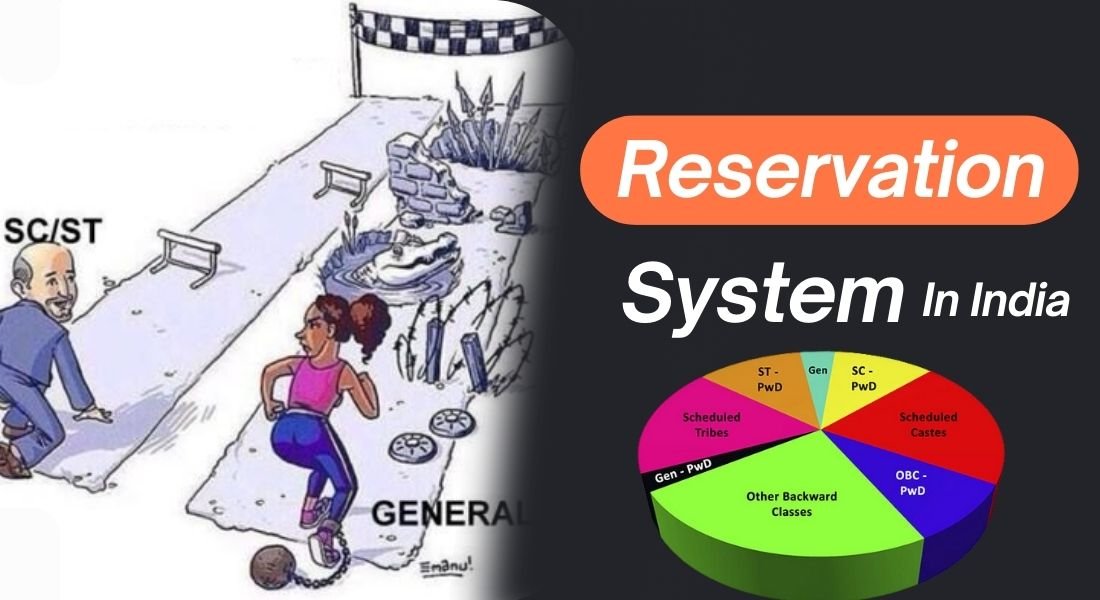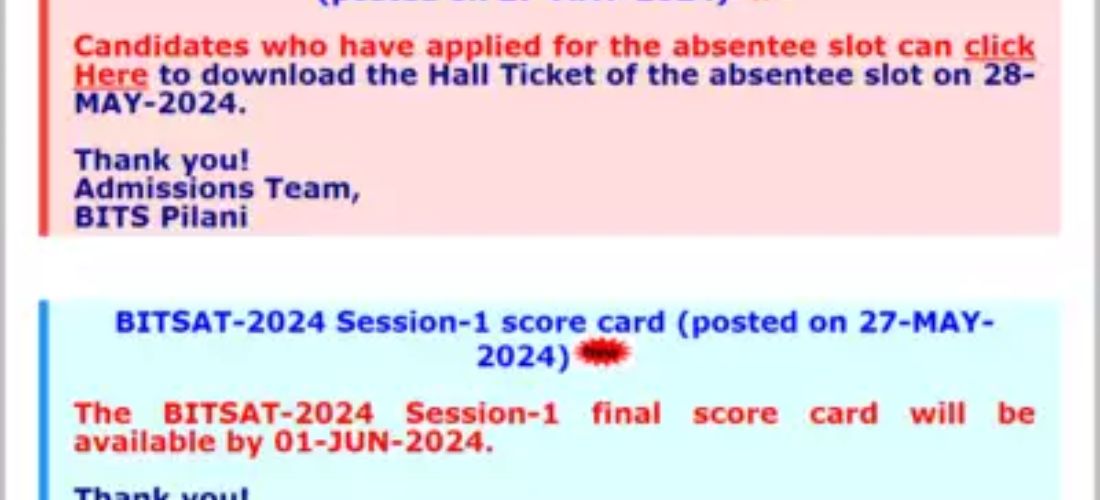Reservation is a controversial issue that has been debated since the beginning, with people having different opinions on its merits and demerits. While some believe it is a necessary tool for social justice and empowerment, others argue that it perpetuates inequality and hinders meritocracy. The ongoing debate over reservations in India has become increasingly polarized, with both supporters and critics passionately defending their positions.
As the country moves forward, it is important to engage in constructive dialogues that consider the complex historical, social, and economic factors associated with this issue, with the ultimate goal of creating a more equitable and inclusive society.
Reservation in India
Reservation has two main meanings in India.
To hold something for one’s own use: This is the general meaning you will find everywhere. It refers to securing something in advance, such as a restaurant table or a train ticket. You make a reservation to guarantee your spot.
Affirmative action in education and jobs: This is a specific system in India to help disadvantaged communities. The government sets aside a certain number of seats in schools, colleges, and government offices for these communities. This aims to give them a fair shot at opportunities they might not have otherwise.
Purpose of Reservation in India
The reservation system in India exists to bridge this gap. Historically, some communities faced social and economic exclusion. The purpose of the reservation is to provide assistance to these communities.
- Reservations set aside seats in education and government jobs for these communities. This ensures that they have a fair chance to compete.
- Seeing members of your community succeed inspires others to pursue higher education and careers. This removes old social barriers.
- A reservation brings together people from different backgrounds. It promotes a more inclusive society with a wider range of perspectives.
Also Read: Co-Education
The Historical Roots of Reservation in India
The reservation system in India has a long and complex history, dating back centuries. Here are details of its developments:
Early traces (2nd century BCE): Even in ancient India, there were privileges for the upper classes. This can be seen as a distant precursor to the concept of reservation.
1882: The seeds of reform were sown: William Hunter, an Englishman, and Jyotirao Phule, a social reformer, proposed a caste-based reservation system to remove social inequalities.
1933: Communal Awards: The British introduced separate constituencies for different communities, including Dalits. This faced opposition from Gandhiji, who favored a united Hindu constituency.
1932: Poona Pact: An agreement was reached. India will have a single Hindu electorate with seats reserved for Dalits (SC).
1990s: Mandal Commission Report: This report recommended reservation for Other Backward Classes (OBCs) in government jobs, sparking further debate.
Post-Independence and the Constitution: The reservation system as we know it today was developed by Dr. B.R. Ambedkar. It was enshrined in the Indian Constitution, prepared by the Constituent Assembly under the leadership of Ambedkar. Initially, it was intended to be temporary (10 years) but was extended due to the continuing need for social upliftment.
Also Read: Online Vs Offline Education
Reservation Percentage in India in 2026
| Category | Reservation Percentage |
| Economically Weaker Sections (EWS) | 10% |
| Scheduled Caste (SC) | 15% |
| Scheduled Tribe (ST) | 7.5% |
| Other Backward Classes (OBC) | 27% |
| Persons with Benchmark Disabilities | 4% |
Also Read: Online Vs Offline Shopping
A few important points regarding the reservation percentages in India in 2026 are:
- The Constitution (One Hundred and Third Amendment) Act, 2019, provided 10% reservation for Economically Weaker Sections (EWS) from the unreserved category.
- The existing reservations for Scheduled Castes (SC) and Scheduled Tribes (ST) are 15% and 7.5% respectively.
- The reservation for Other Backward Classes (OBC) is 27%.
- Persons with Benchmark Disabilities are provided a 4% reservation across all categories.
- While the overall reservation exceeds 50%, the Supreme Court has upheld the validity of the 103rd Constitutional Amendment that allows for reservation on economic grounds, stating that the 50% cap is not inviolable.
The reservation percentages are followed in central government-funded higher education institutions, government jobs, and elections. However, some states have reservation percentages that exceed the national averages. For example, Tamil Nadu has a 69% reservation that applies to 87% of the population.
Also Read: Life Without Music
The State-Wise Reservation Percentages in India in 2026
| State/UT | SC | ST | OBC | EWS | Total |
| Andhra Pradesh | 15% | 6% | 29% | 10% | 60% |
| Arunachal Pradesh | – | 80% | – | – | 80% |
| Assam | 7% | 15% | 27% | 10% | 59% |
| Bihar | 20% | 2% | 33% | 10% | 75% |
| Chhattisgarh | 13% | 32% | 14% | 10% | 69% |
| Goa | 2% | 12% | 27% | 10% | 51% |
| Gujarat | 7% | 14% | 27% | 10% | 58% |
| Haryana | 20% | – | 27% | 10% | 57% |
| Himachal Pradesh | 25% | 4% | 12-18% | 10% | 51-59% |
| Jharkhand | 10% | 26% | 14% | 10% | 60% |
| Karnataka | 17% | 7% | 32% | 10% | 66% |
| Kerala | 8% | 2% | 40% | 10% | 60% |
| Madhya Pradesh | 16% | 20% | 14% | 10% | 60% |
| Maharashtra | 13% | 7% | 32% | 10% | 62% |
| Manipur | 3% | 34% | 17% | – | 54% |
| Odisha | 16% | 22% | 27% | 10% | 75% |
| Punjab | 29% | – | 12% | 10% | 51% |
| Rajasthan | 16% | 12% | 21% | 10% | 59% |
| Tamil Nadu | 18% | 1% | 50% | – | 69% |
| Telangana | 15% | 10% | 29% | 10% | 64% |
| Uttarakhand | 19% | 4% | 14% | 10% | 47% |
| Uttar Pradesh | 21% | 2% | 27% | 10% | 60% |
| West Bengal | 22% | 6% | 17% | 10% | 55% |
Rajasthan
- In the 2025 Budget, the Rajasthan government announced that the ex-servicemen from the Agnipath Scheme (“Agniveers”) also benefited in the reservation system; they get reservation in their state government jobs in police, prison, forest, and fire services.
- Rajasthan state also approves 5% reservation for MBC in 20219, but it has not yet been included in the Ninth Schedule, so legal/implementational clarity is still awaited.
Maharashtra
- Maharashtra issued a policy in 2025 for the eight tribal dominated districts (e.g., Nashik, Dhule, Nandurbar, etc.). Include this under the “Socially and Educationally Backward Classes (SEBC) Act, 2024”
- For the 2025-26 academic session, the state government announced a 10 % reservation for EWS in private medical colleges.
Uttar Pradesh
- The Allahabad High Court struck down government orders allowing reservations of over 79% for admissions to medical colleges in some districts, as they violated the judicially established 50% limit.
Also Read: Creativity vs Knowledge – Which Is Better?

Constitution for Reservations in India
The Indian Constitution provides the legal framework for reservations, which aim to ensure equal opportunities for historically disadvantaged communities
- Articles 330-342 (Part XVI): These articles specifically address the reservation of seats in legislatures for Scheduled Castes (SCs) and Scheduled Tribes (STs). They guarantee representation in Parliament and State Legislative Assemblies.
- Article 15(4): This empowers the State to make special provisions for the advancement of “socially and educationally backward classes” (SEBCs) along with SCs and STs. This allows reservations in educational institutions.
- Article 16(4): Similar to Article 15(4), this article permits reservation in public employment for SCs, STs, and SEBCs.
- Article 46: This article mandates the State to promote the educational and economic interests of SCs and STs. It emphasizes protection from social injustice and exploitation.
- The Constitution (77th Amendment) Act, 1995, allows reservation in promotions for government jobs.
- The 103rd Amendment (2019) introduced a 10% reservation for Economically Weaker Sections (EWS) in educational institutions and government jobs.
Also Read: Organic Farming — Good or Bad
Indra Sawhney Case (1992)
The Indra Sawhney case (1992), also known as the Mandal Commission case, was a historic decision of the Supreme Court in India that dealt with affirmative action for disadvantaged groups in government jobs and education:
- Issue: Challenged the Mandal Commission’s recommendations to expand affirmative action to Socially and Educationally Backward Classes (SEBCs) alongside existing reservations for Scheduled Castes (SCs) and Scheduled Tribes (STs).
- Retained the requirement of affirmative action but restricted it. Caste alone was not enough.
- Introduced the “creamy layer” concept: Excluded wealthy members of backward classes from reservations.
- Set a 50% limit on total reservations.
- Allowed reservations based on a combination of caste and economic criteria.
- Impact: Significant change in affirmative action policies in India.
Also Read: Cashless Economy – Pros and Cons
Janhit Abhiyan Case (2022)
The Janhit Abhiyan case (2022) was a judgment of the Supreme Court in India that upheld 10% reservation for Economically Weaker Sections (EWS) in government jobs and educational institutions
- The 103rd Constitutional Amendment introduced a 10% reservation for EWS. This case challenged its validity.
- Arguments Against: Critics argued it violated the right to equality and discriminated against existing reservations for backward classes.
- Court’s Decision: The Supreme Court upheld the amendment. They reasoned it addressed economic backwardness, a valid concern.
- Impact: The decision has been debated. Some see it as promoting social justice, others worry it might affect existing affirmative action programs.
Also Read: Peer Pressure
Arguments Against Reservations in India
Reservation in India is a complex issue, and both sides have strong opinions on it. Here are some common arguments against this policy:
- Critics argue that reservation weakens meritocracy, the principle of selecting individuals on the basis of merit. They believe that a job or seat should always go to the most qualified candidate, irrespective of caste.
- Some argue that reservations reinforce the caste system by constantly reminding people of their caste identity. They believe the focus should be on creating a society where caste is irrelevant.
- Concerns exist about the misuse of reservations by those who are not genuinely disadvantaged. This can lead to disqualification and frustration for qualified candidates who miss out.
- Some argue that this system benefits the “creamy layer” in the reserved categories – those who are already affluent. This raises the question of whether reservation reaches the neediest.
- Opponents view reservations as reverse discrimination against unreserved categories. They believe that everyone should compete on an equal level.
Also Read: Mob Lynching in India
Arguments in Favor of Reservations in India
Reservation in India is a controversial policy, but proponents offer compelling arguments for its continued existence:
- Centuries of social exclusion and discrimination have left historically disadvantaged communities far behind. The purpose of the reservation is to remove this imbalance and provide them a chance to move ahead.
- Caste discrimination persists, and reservations help create more equal opportunities for education and jobs. They provide opportunities that might not otherwise exist.
- Reservation promotes diversity in institutions and workplaces. This will improve decision-making capabilities and enrich the national structure.
- By achieving success through reservation, individuals and communities gain confidence and self-confidence. This may promote greater social mobility and participation in society.
- Reservation ensures that marginalized communities get a voice in government and institutions. This gives them an opportunity to advocate for their needs and challenge discrimination.
- Reservations are seen as a form of affirmative action, a necessary step to achieve social justice for historically disadvantaged groups.
Also Read: Children’s Education Allowance
Reservation is a system in India that sets aside seats in education and government jobs for disadvantaged communities. Its purpose is to give them a fair chance at opportunities they might not otherwise have. This is because some communities have historically faced social and economic exclusion.
Reservation is a complex issue, and both sides have strong opinions on it. Supporters say it is necessary for social justice, while critics argue that it harms meritocracy.
The debate is likely to continue as India works towards a more equitable society.
Also Read: Unemployment Rate in India
FAQS: Reservation in India
What is the reservation system of India?
India’s reservation system is a form of affirmative action that provides opportunities to historically disadvantaged groups like the Scheduled Castes (SC), the Scheduled Tribes (ST), Other Backward Classes (OBC), and Economically Weaker Sections (EWS). This includes reservations in government jobs, educational institutions, and legislatures.
How many types of reservations are there in India?
There are primarily four types of reservations in India:
- Caste-based Reservations
- Economically Weaker Sections (EWS) Reservation
- Disability-based Reservations
- Women’s Reservation
What is the percentage of reservations in India?
The total percentage of reservations in India varies across different categories and regions. However, it generally ranges between 49.5% to 52%. This includes reservations for SCs, STs, OBCs, EWS, and other categories.
How did the reservation system start in India?
The roots of India’s reservation system trace back to the British Raj. The Communal Award of 1933 introduced separate electorates for various communities, including Dalits. After negotiations, the Poona Pact of 1932 established a single Hindu electorate with reservations for Dalits within it. Post-Independence, the Indian Constitution enshrined reservations for SCs, STs, and OBCs to address historical social and economic disparities.
Also Read: Women’s Empowerment: Pros and Cons
Who gave the first reservation in India?
Chhatrapati Shahu, the Maharaja of Kolhapur, is credited with introducing the first reservation system in India in 1902. He implemented reservations in education for non-Brahmin and backward castes in his princely state.
Who has more reservations, SC or OBC?
The percentage of reservations for OBCs (25.84%) is higher than that for SCs (16.66%).
Who has the biggest reservation?
Chhattisgarh has the highest reservation quota in India, with a total of 82%. This includes reservations for SCs, STs, OBCs, and EWS.
Who created SC ST in India?
The terms “Scheduled Castes” and “Scheduled Tribes” were first used in the Government of India Act of 1935. However, the concept of categorizing certain communities as socially and educationally backward has a longer history, with leaders like Dr. B.R. Ambedkar and Mahatma Gandhi playing significant roles in advocating for their rights and representation.
Also Read: Love vs Arranged Marriage – Which One is Better?
Is caste reservation good or bad?
The reservation system in India is a complex issue with both positive and negative aspects.
Arguments for Reservation:
- Social Justice
- Diversity
- Empowerment
Arguments Against Reservation:
- Meritocracy
- Inefficiency
- Perpetuation of Caste
Who is in the Creamy Layer?
The “creamy layer” refers to a group within the Other Backward Classes (OBC) who are socially and economically well-off. They are not eligible for the benefits of reservation policies because they are seen as financially stable and do not need special support.
The main factors used to decide if someone is in the creamy layer are their income and education level.
People from OBC families who earn more than a certain amount or have high educational achievements are usually considered part of the creamy layer.
Also Read: Why India Has +91 in Phone Numbers
- References:
- https://dpe.gov.in/sites/default/files/Reservation_Brochure-2.pdf
- https://www.iasexpress.net/reservation-system-in-india-upsc-ias-gk/
- https://en.wikipedia.org/wiki/Reservation_in_India
- https://www.legalserviceindia.com/legal/article-7730-reservation-in-india.html
- https://dopt.gov.in/sites/default/files/FAQ_SCST.pdf




